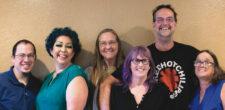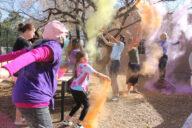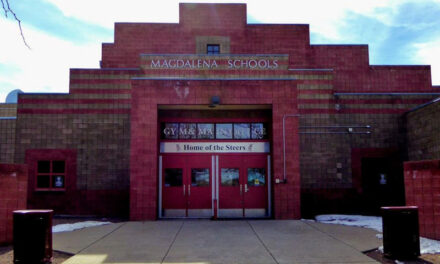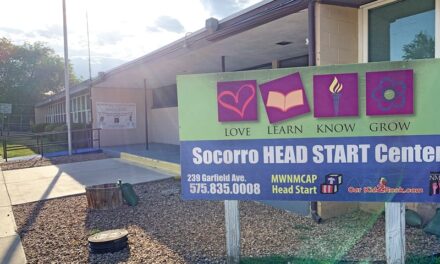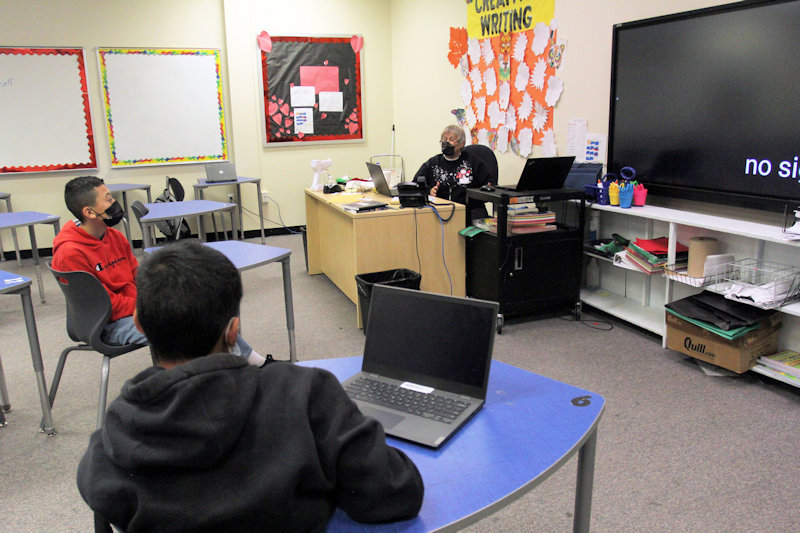
Students in Josephine Silve-Sena’s digital citizenship class learn about phishing scams and balancing virtual and in person life.
Cathy Cook | El Defensor Chieftain photos
Social media trends and the pandemic have both taken a toll on student behavior.
The Socorro Consolidated School District saw thousands of dollars in damage from vandalism and theft over the fall semester after a TikTok trend that encouraged stealing or destroying school property caught on locally. The ‘devious licks’ trend promoted stealing items like soap dispensers from schools. Both Sarracino Middle School and Socorro High School saw an impact from the trend, but the middle school suffered more of the damage, according to Superintendent Ron Hendrix.
Over the course of the semester, students stole bags of soap, a soap dispenser was pried off the wall, paper towel holders were taken and one bathroom stall door was pulled off. Vandalism at the middle school peaked in October, said Principal Holly Mayfield.
Behavior issues in general have been higher this school year, in part because there’s been a significant increase in students with anxiety and depression.
“Some of the kids really held it together through Covid and were really scared and isolated and then they got back to where they were not at that high stress where they have to keep it together, and they’re kind of falling apart,” said Mayfield. “And other kids have lost family members and they’re dealing with grief on top of the social isolation.”
The middle school has both a counselor and social worker on staff.
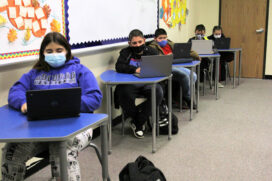
Silva-Sena said she hopes her students will share what they learn in the class with their peers.
Most of the vandalism seems to have stopped, said Mayfield. The school responded by requiring students to sign in at the front office before going to the bathroom and limiting bathroom use to one kid at a time. The bathrooms were also closed during passing periods and one of the middle school’s three bathrooms was closed entirely because staff had trouble monitoring it. The district also purchased new cameras, said Hendrix, which will be installed soon. The district is also pressing charges when students are caught, said Hendrix.
Mayfield said the district has limited funds to deal with the vandalism and she encouraged the students to think about how those funds could be better spent.
“What I told the kids when we were having the vandalism issues, was replacing all the soap dispensers in the bathroom would be $300, that the same as taking a bus to Albuquerque for a field trip,” said Mayfield.
The vandalism was an unusual issue for the school, said both Hendrix and Mayfield. Mayfield said it began abruptly. The school staff are on the lookout for other disruptive TikTok trends, but have not seen any other trends catch on locally.
However, social media continues to be a challenge. Two weeks ago, the middle school had to ask Instagram to take down an anonymous account where students were posting embarrassing photos of other students and teachers. The school’s ability to address issues that crop up on social media is limited, said Mayfield, in part because it is so easy for people to remain anonymous. Online bullying can have a lasting impact.
“If you put it in writing that’s a whole different level,” she said. “That’s more permanent and kids go back, and they read it again and again and again, so it can cause quite a bit more damage than just traditional verbal bullying.”
One incident earlier in the semester was serious enough to be reported to law enforcement and prompt an investigation.
The school also addresses social media and internet use with a digital citizenship class that began last year and is required for sixth grade students.
Teacher Josephine Silva-Sena teaches students about topics like phishing scams and finding a balance between virtual and in person life. Silva-Sena said many of her students came in with social media smarts and are willing to help her learn more.
Almost half of her Tuesday morning class had TikTok accounts. Others connect online with friends via online gaming or older platforms like Facebook, and some of the students use very little social media at all.
“I think parents misunderstand how stressful it can be on social media,” said student Joshua Carrejo.
Carrejo said he had some friends spread rumors about him and another friend online. The rumors caused enough of a rift that one friend left the friend group. But he’s met some really cool people via online gaming too.
Student Amelia Gonzalez said she thinks social media platforms should try harder to do something about the spread of gossip or bullying.
“Social media platforms are a very, very big thing. When somebody says something about someone on social media eventually the whole school finds out,” she said.
She also thinks they can be helpful.
Mayfield would agree. When students returned to class at the start of the semester after being primarily online for most of the previous school year, they tested extremely low in math but much better in reading than expected. Mayfield credits some of that to the online reading kids did while they were stuck at home. Reading is reading, she pointed out, whether it’s a novel or a Facebook post.

